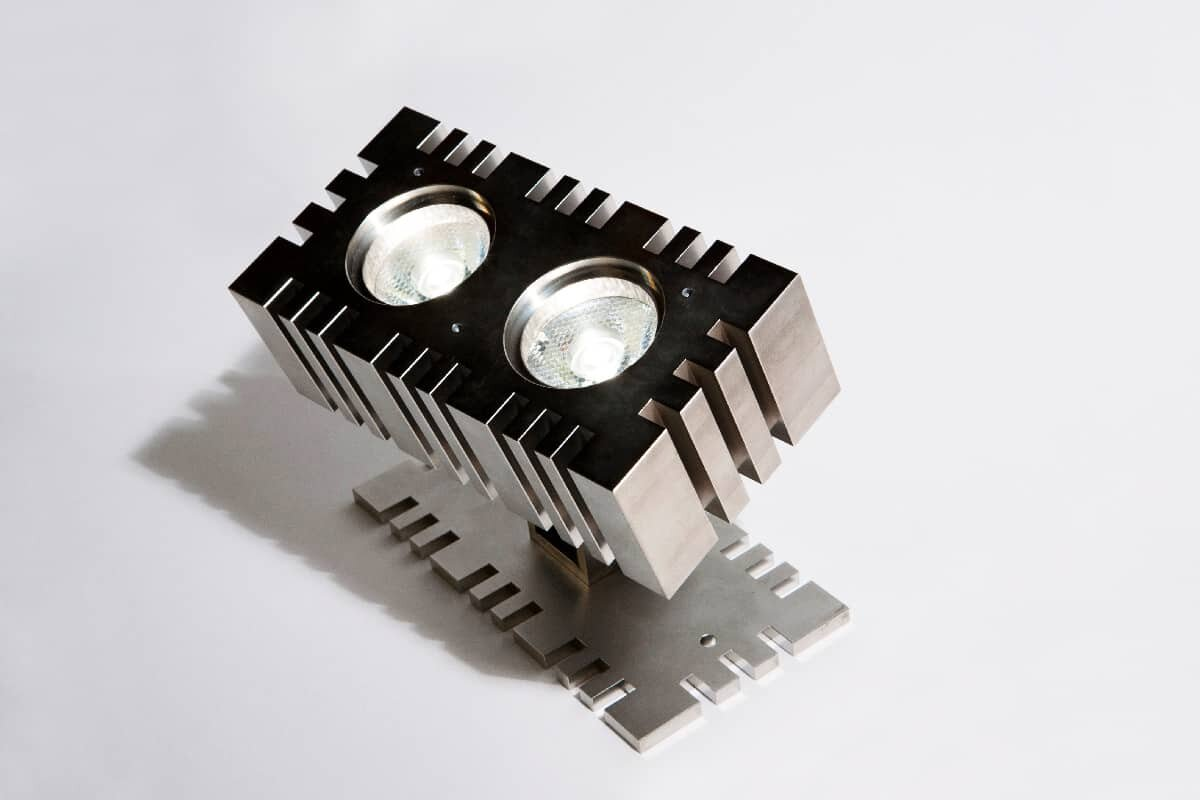Wire EDM, or Electrical Discharge Machining, has become a popular method for cutting intricate shapes and complex parts with high precision in the metal fabrication industry. This process uses electrical discharges, or sparks, to remove material, making it ideal for hard metals like steel, titanium, and tungsten. However, cutting softer metals like aluminum becomes a bit more nuanced.
Aluminum is a widely used metal in industries such as aerospace, automotive, and electronics due to its lightweight and corrosion-resistant properties. However, working with aluminum using wire EDM requires a specific approach to avoid potential challenges such as wire breakage or overheating. This article delves into the ins and outs of wire EDM aluminum, providing useful tips and guidelines to ensure you get the best results from this innovative machining process.
What is Wire EDM Aluminum?
Wire EDM (Electrical Discharge Machining) is a specialized technique that removes material from electrically conductive materials using a thin wire as an electrode. The process relies on the spark erosion mechanism, where electrical discharges create tiny sparks that erode the material bit by bit. The wire is usually made from brass or copper and never touches the workpiece, as the erosion happens due to the spark between the wire and the material.
The process remains the same when applying wire EDM to aluminum, but certain precautions must be taken. Aluminum is softer than many other metals typically used in wire EDM, which can be prone to warping, deformation, or excessive wear on the wire if not handled properly. However, with the correct setup, wire EDM aluminum can result in highly accurate and intricate cuts, making it a preferred choice for many manufacturers of this versatile metal.
The advantages of using wire EDM for aluminum are clear. The non-contact nature of the process means there’s no risk of mechanical damage or deformation, and its precision ensures that even the most complex shapes can be accurately produced. Wire EDM also allows for tight tolerances and smooth surface finishes, making it ideal for industries where precision and accuracy are paramount.
How Does Wire EDM Aluminum Work?
The process of wire EDM aluminum begins by setting up the machine to run the electrical discharges through a thin wire electrode. The workpiece, in this case, an aluminum block or sheet, is submerged in deionized water to act as a dielectric fluid. This fluid cools the material and washes away the eroded particles, ensuring a clean and efficient cutting process.
One key factor in working with aluminum using wire EDM is controlling the heat. Aluminum has high thermal conductivity, which can heat up quickly during cutting. Excessive heat can lead to wire breakage or cause the material to deform. Therefore, the cutting speed, wire tension, and discharge energy must all be carefully managed to ensure a smooth and successful cut.
The wire moves along a predefined path according to the CAD design, and the machine uses precise coordinates to generate the spark discharges needed to cut through the aluminum. The wire never comes into contact with the material directly, which reduces the risk of burrs or rough edges, resulting in a smooth finish. Additionally, wire EDM can cut extremely thin or intricate features in aluminum that would be challenging to achieve with traditional machining methods.
Tips for Wire EDM on Aluminum
Adopting a few best practices is essential when using wire EDM for aluminum to ensure optimal performance and results. Below are some tips to make the most of your wire EDM metal service when working with aluminum:
Control the Heat
As mentioned earlier, heat management is crucial when machining aluminum using wire EDM. Aluminum’s high thermal conductivity can cause it to absorb heat faster than other metals, leading to potential problems such as wire breakage or material warping. To avoid this, the discharge energy is reduced, and the cutting speed is lowered to minimize the heat generated during the process. Deionized water as a cooling medium is essential in effectively dissipating heat.
Another way to manage heat is to increase the dielectric fluid’s flushing pressure. This ensures that the eroded particles are quickly removed from the cutting zone, reducing the chances of overheating. Proper flushing also helps maintain the wire’s integrity and prevent premature breakage, which is common when cutting softer metals like aluminum.
Choose the Right Wire
The type of wire used in wire EDM significantly affects the cut quality and the machining process’s overall success. Coated wires, such as zinc-coated brass wires, are advisable for cutting aluminum. These wires offer better wear resistance and increased cutting speed, making them more efficient for aluminum.
Brass wires are generally preferred due to their conductivity and durability. Additionally, using thinner wires allows for more precise and intricate cuts, particularly useful when working on complex shapes and designs.
Optimize Machine Settings
Aluminum requires specific settings in the EDM machine to avoid issues like excessive wear or breakage. Reducing the discharge current, decreasing pulse duration, and adjusting the wire tension can help maintain stability during cutting. A slower feed rate can also ensure smoother cuts and prevent unwanted deformation.
Machine parameters must be monitored and adjusted regularly throughout the process to achieve the best results. Test cuts on scrap aluminum are recommended to fine-tune the machine before starting on the final workpiece.
Prevent Oxidation
Aluminum is prone to oxidation when exposed to air, which can interfere with the wire EDM process. To prevent this, consider applying a protective coating to the material or using a controlled environment with minimal exposure to oxygen during cutting.
Additionally, maintaining a clean work area and ensuring that the aluminum is free from contaminants before starting the wire EDM process can help improve the quality of the cut. Oxidation or contamination on the material’s surface can lead to rough edges or incomplete cuts, which may require additional finishing.
Use Taper Cuts for Complex Shapes
One of wire EDM’s main advantages is its ability to create taper cuts, which are angled cuts that can follow complex geometries. When working with aluminum, taper cuts are especially useful for producing parts with varying thicknesses or intricate features that would be difficult to achieve with other machining methods.
Adjusting the wire’s angle during the cutting process allows you to create precise taper cuts without compromising accuracy or surface finish. This is particularly beneficial in industries requiring complex designs and tight tolerances.
Ensure Proper Flushing
Flushing is a crucial aspect of wire EDM, particularly when working with materials like aluminum. The dielectric fluid (usually deionized water) is essential for cooling and removing the tiny particles eroded from the workpiece during cutting. Ensuring proper flushing pressure keeps the cutting zone free of debris, reducing the risk of overheating or wire breakage. If the flushing pressure is too low, particles can accumulate in the cutting area, which can cause poor finishes or even wire snapping.
Additionally, constant flushing helps maintain a consistent temperature in the cutting area, ensuring even cuts and preventing distortion in softer metals like aluminum. Ensure your machine’s flushing system is optimized before starting the process.
Monitor Wire Wear
Wire wear is a common challenge in wire EDM, and it can happen faster with aluminum than with harder materials. Monitoring wire wear is essential to ensure consistent cutting performance. If the wire becomes too worn, it may not generate the required electrical discharge effectively, resulting in rough edges or incomplete cuts.
To avoid this, regularly inspect the wire during the process and replace it if necessary. Automated wire threading systems can help maintain efficiency by quickly replacing worn-out wire sections. Using a high-quality, coated wire can also reduce wear and extend the wire’s lifespan, ensuring a more consistent cutting performance throughout the process.
Conclusion
Wire EDM is an incredibly effective technique for machining aluminum. It provides a high level of precision and accuracy without the need for physical contact with the material. When applied correctly, it allows for intricate cuts, smooth finishes, and consistent results, making it ideal for industries that require complex aluminum parts.
However, achieving success with wire EDM aluminum requires a good understanding of the material’s properties and the process. Proper heat management, wire selection, and optimized machine settings are essential to avoid common pitfalls such as wire breakage or material deformation. By following these best practices, you can ensure your wire EDM projects are successful and efficient.
Incorporating wire EDM into your wire EDM metal service can help you fully take advantage of this process’s benefits, particularly when working with softer metals like aluminum. Whether you’re producing parts for aerospace, automotive, or electronics applications, wire EDM offers precision and versatility that traditional machining methods simply cannot match.
Keep an eye for more news & updates on Headlines!



